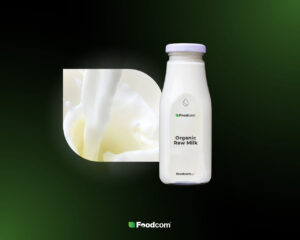Резюме
Оглавление
Discover the organic milk market in Europe with us! Take a look at the EU requirements for organic farming, key manufacturers, and production statistics. Discover which countries increased organic milk output in recent years, what is the percentage of organic cows in major producing countries, and what are the key market challenges for the near future.
According to the European Commission, the term “organic” is eligible for labeling products containing at least 95% of ingredients of organic origin. The key principles in the EU on organic farming include crop rotation, high biodiversity, and rigorous animal welfare standards. The use of antibiotics, chemical pesticides, and genetically modified organisms is highly restricted.
The organic dairy market was estimated to be worth over € 4 billion in 2018, of which around 25% is owed to France and Germany. Although data on organic milk in 2020 is still incomplete, an upward trend is noted in some of the key players in the European dairy market. The data from France and Germany shows that organic milk deliveries have been growing in the last 4 years, with respect to the seasonal volatility. In France, the 2020 organic milk deliveries in May (peak month) amounted to 100.33 million liters – an increase from 95.35 million in the same month in 2019. German deliveries were noted at 111.40 million liters in May last year compared to 107.80 million in the same period in 2019. In 2018, Germany owned 21% of the market share in organic milk production, France ranked second with 16%, followed by Denmark and Austria with 12% each. At the end of 2018, France also noted the fastest increase in organic milk production with a year-to-year increase of 34% and total organic milk production at 869,500 tonnes, but it did not surpass the German output recorded at over 1.1 million tonnes.
Data for 2019 shows that within the EU, among all dairy cows only 4% were organic. Among the major dairy-producing countries, Austria had the largest share of organic cows – 21.7% of the livestock. Denmark ranked second with 13.7%. Germany and France follow with 5.5% and 4.5% of organic dairy cows respectively. In Poland, organic cows constituted 0.5% of all dairy cows in 2019.
The EU ambitious Farm to Fork program aims at increasing the share of sustainable farming to 25% by 2030. Within the organic dairy sector, major concerns are raised about the customers’ willingness to pay more for such products. In 2018, the most notable difference was seen in Austria – retail price for organic milk was 53% higher than that of the conventional product while in the Netherlands it was only 9% higher. The program was also developed before the pandemic and will now have to face the current agricultural crisis. In order to tackle the situation, the EU announced an €8.07 billion programs dedicated to the improvement of the farming sector. At least 37% of those funds were secured for organic farmers to be made available until the end of 2022.
What is “organic milk” in the EU?
According to the European Commission, the term “organic” is eligible for labeling products containing at least 95% of ingredients of organic origin. The key principles in the EU on organic farming include crop rotation, high biodiversity, and rigorous animal welfare standards. The use of antibiotics, chemical pesticides, and genetically modified organisms is highly restricted.
Organic milk production
The organic dairy market was estimated to be worth over € 4 billion in 2018, of which around 25% is owed to France and Germany. Although data on organic milk in 2020 is still incomplete, an upward trend is noted in some of the key players in the European dairy market. The data from France and Germany shows that organic milk deliveries have been growing in the last 4 years, with respect to the seasonal volatility. In France, the 2020 organic milk deliveries in May (peak month) amounted to 100.33 million liters – an increase from 95.35 million in the same month in 2019. German deliveries were noted at 111.40 million liters in May last year compared to 107.80 million in the same period in 2019. In 2018, Germany owned 21% of the market share in organic milk production, France ranked second with 16%, followed by Denmark and Austria with 12% each. At the end of 2018, France also noted the fastest increase in organic milk production with a year-to-year increase of 34% and total organic milk production at 869,500 tonnes, but it did not surpass the German output recorded at over 1.1 million tonnes.
Data for 2019 shows that within the EU, among all dairy cows only 4% were organic. Among the major dairy-producing countries, Austria had the largest share of organic cows – 21.7% of the livestock. Denmark ranked second with 13.7%. Germany and France follow with 5.5% and 4.5% of organic dairy cows respectively. In Poland, organic cows constituted 0.5% of all dairy cows in 2019.
Market outlook and challenges
The EU ambitious Farm to Fork program aims at increasing the share of sustainable farming to 25% by 2030. Within the organic dairy sector, major concerns are raised about the customers’ willingness to pay more for such products. In 2018, the most notable difference was seen in Austria – retail price for organic milk was 53% higher than that of the conventional product while in the Netherlands it was only 9% higher. The program was also developed before the pandemic and will now have to face the current agricultural crisis. In order to tackle the situation, the EU announced an €8.07 billion programs dedicated to the improvement of the farming sector. At least 37% of those funds were secured for organic farmers to be made available until the end of 2022.
Категории








